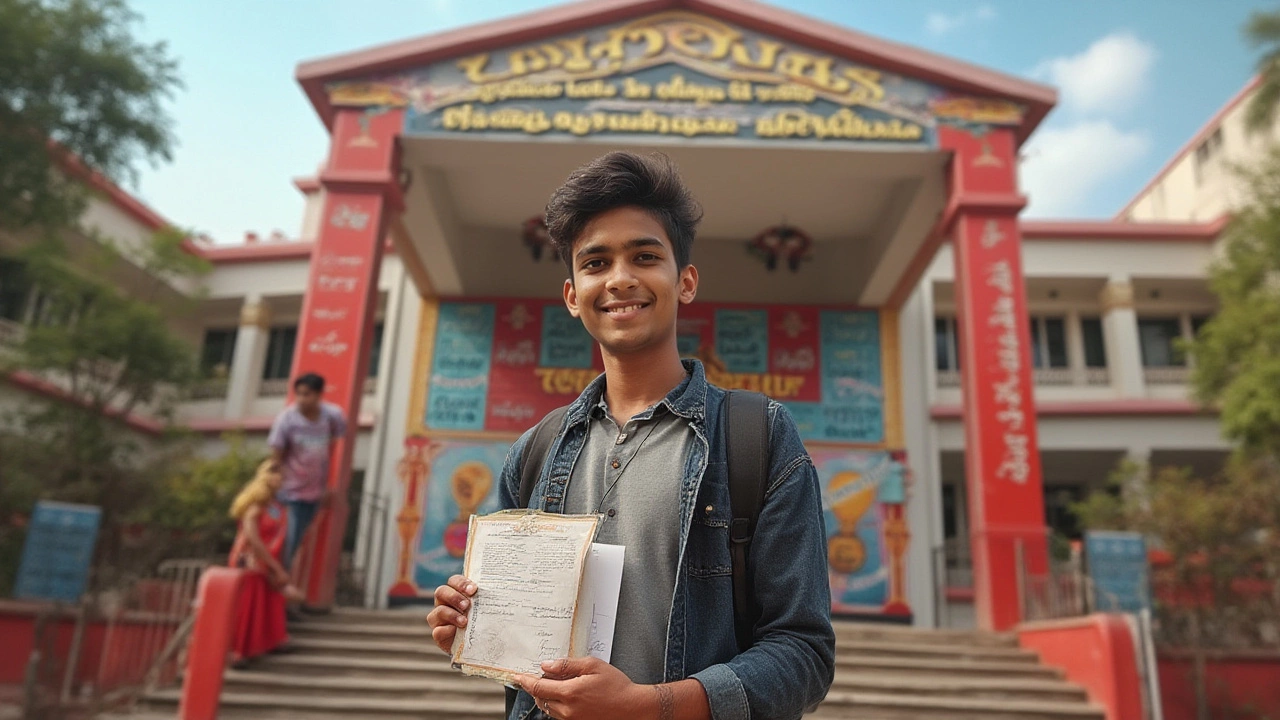The NEET results are in, and the whole country is buzzing. Hearts racing, screens refreshing—every NEET aspirant dreams of hitting that magic number. But once the storm settles, another question takes over: what NEET rank is actually ‘best’? Is there a golden rank where every door opens, or does the chase for the top go deeper than we imagine? Let’s peel back the layers, ignore the myths, and see how ranks really shape your journey to a medical college in India. You might be surprised—it’s not always the AIR 1 who wins the real race.
Understanding NEET Ranks: More Than Just a Number
NEET (National Eligibility cum Entrance Test) is the big gatekeeper for every medical and dental undergraduate seat in India—government, private, and even deemed universities. The exam itself is a battle of wits, with over 24 lakh students appearing in NEET 2024, and the number is expected to climb higher in NEET 2025. When those results come out, everyone checks their AIR (All India Rank) before their score. But what does this number really mean for your future?
A NEET rank isn’t just a position in a giant list—it’s your ticket to a seat, and a window to your options. There’s no secret ‘best’ rank. Instead, what matters most is how your rank lines up with the previous year's cutoffs for the colleges and quotas you’re targeting. Whether it’s AIIMS Delhi or a state quota government seat, each has its own puzzle to solve. What throws a lot of students off is that closing ranks shift every year, depending not just on exam difficulty, but also on reservation quotas and the number of seats added.
In 2023, the top 50 ranks could almost guarantee you a seat at AIIMS Delhi, which is the unicorn for NEET aspirants. But for those aiming for any government medical college, the story changes—the last government MBBS seat in some states goes to ranks beyond 30,000! State-wise quotas, OBC/SC/ST reservations, and even differences between home-state and all-India quotas can turn a seemingly average NEET rank into a golden passport elsewhere.
Take this truth: someone with a NEET rank of 5,000 can get a government MBBS seat in a north-eastern state, while a rank of 1,500 may struggle in Delhi or Maharashtra. There’s no single best rank—there’s only the best rank for your dream college, category, and quota.
NEET Cutoffs and Ranks: Cracking the College Code
Cutoffs aren’t set in stone—they dance around every year, sometimes by thousands of ranks. What’s steady is the fierce competition for the top government and central institutes. Let’s break down the numbers using actual closing ranks from 2023, so you see the real picture—not just the fairy tale of ‘top 100’.
| College | General Closing Rank (AIQ) 2023 | General Cutoff Score |
|---|---|---|
| AIIMS Delhi | 55 | 720 |
| Maulana Azad Medical College (Delhi) | 90 | 715 |
| CMC Vellore | 180-300 | 695-700 |
| KGMC Lucknow | 983 | 685 |
| Grant Medical College (Mumbai) | 1720 | 670 |
| Government Medical Colleges in Bihar | ~9000 | 640 |
| Government Medical Colleges in Rajasthan | ~13,500 | 610 |
| Private MBBS Seats (Average) | 25,000+ | 580+ |
Now look at that spread. Getting under AIR 100 isn’t just rare—it’s Everest-level territory. For many, a rank under 5000 is enough for solid government options in several states. Cross 10,000 and seats get more competitive, but you still have plenty of options—just not always in Delhi or Mumbai. Above 20,000, you’re looking at private colleges or BDS seats, though some states with more seats might cut off higher.
The number that matters? For UR (unreserved) category, scoring above 600 almost always puts you in the running for government seats, especially outside the most competitive states. For reserved categories (OBC, SC, ST, EWS), closing ranks can stretch far higher, making a mid-range rank extremely valuable if you qualify.

Different Ranks, Different Outcomes: What Each Rank Brings You
People love to ask, “Which NEET rank is best?” But what they really mean is, “What can I get at my rank?” Here’s a sharper look at what opens up at different NEET ranks, stripped of all the hype:
- Top 100: You’re in superstar territory. Think AIIMS Delhi, MAMC Delhi, and the best of the best. Central institutes are wide open here. If you’re aiming for a national-level seat, life can feel like a red carpet.
- Rank 100–500: Still amazing—AIIMS, JIPMER, CMC, AFMC, and every state’s government medical college are all within reach, especially through 15% All India quota. Expect your pick of streams and locations.
- Rank 500–5000: This covers the cream of government colleges across India—even the top ones in Maharashtra, Karnataka, Tamil Nadu, and Uttar Pradesh. If your heart isn’t set on one city, you’ll be choosing from strong options, especially with state quota perks.
- Rank 5000–15,000: Many state medical colleges are still in play, including lots of home-state quota government seats. Some big metro colleges may be out, but you gain great regional colleges—doctors from these colleges bag top PG seats every year.
- Rank 15,000–30,000: Some government MBBS seats will close, but newer government colleges and several good private options open up, especially with scholarships or management quotas. Dental and allied health programs are also strong bets here.
- Rank 30,000 and above: Here you’ll mostly be in private colleges, but don’t discount the value of DNB, paramedical, and BDS courses. Some states with an abundance of seats, like Tamil Nadu and Kerala, still offer hope up to this cut-off range, especially for reserved categories.
The bottom line: Don’t fall for the ‘only top 100 matters’ trap. Every year, thousands with ranks far from AIR 1 go on to excel in medicine, break records in PG exams, and serve as star doctors nationwide.
Tips for Hitting the Best Possible NEET Rank for You
Now, the big question—how do you improve your chances? Forget magic formulas. It’s about tactics, discipline, and knowing how the system works. Here’s what the top NEET scorers (and many toppers who missed by a whisker) say really worked for them:
- Don’t ignore biology—yes, it’s half the paper, but it’s also your easiest chance to bank solid marks with regular, focused reading and daily MCQ practice.
- Stay flexible. If life throws you off for a week, don’t chase lost targets. Jump right back with tomorrow’s plan. Rigid plans collapse fast—adapt, but keep moving.
- If there’s one ‘secret’ to a top NEET rank, it’s practicing mock tests almost religiously, then analyzing your errors and actually fixing them before the next Sunday rolls around.
- Resist the urge to skim tough chapters, especially in physics and organic chemistry. Toppers say the chapters they dreaded became their rank deciders after putting in painful hours.
- Fill your OMR with confidence—but keep it absolutely neat. Dozens of students have cracked AIR 1 only to drop thousands of spots thanks to silly filling mistakes.
- During revision, focus less on ‘how much’ and more on ‘how well’—review the tricky diagrams, exceptions, and formulas, not just entire books again.
- Don’t compare yourself to that one friend who always seems a month ahead. Track your progress, fix weaknesses, and keep your mind on your own seat.
It’s easy to believe everyone else has some edge. But the truth is most high-rankers were not born geniuses—they were just relentless about working smart every single day, using the system to their advantage. Remember, some of them were last-benchers in school too.

Practical Steps After Checking Your NEET Result
You got your rank. Panic sets in. Now what? Here’s a step-by-step action plan—whether you’re celebrating, doubting, or feeling stuck in between:
- Step 1: Compare your NEET rank with the latest closing ranks for your target colleges using official state and MCC (Medical Counselling Committee) data. Don’t just trust ‘expected cutoff’ rumors on messaging groups.
- Step 2: Find out about home-state advantages (the 85% quota in state colleges can mean a huge rank difference), and see where you fit. Even a 10,000+ AIR can get you a government seat if you’re in the right state and category.
- Step 3: For borderline cases, research colleges with recent increases in seats—states like Rajasthan, Madhya Pradesh, and Tamil Nadu have opened dozens of new government colleges since 2021. A rank that wouldn’t cut it five years ago might just do it now.
- Step 4: Consider your category—OBC, SC, ST, and EWS seats often close much later than UR. Don’t let a lower AIR discourage you if reservations apply.
- Step 5: Explore all options: MBBS, BDS, and allied health sciences. If you’re determined about medicine, there are routes beyond traditional MBBS—doctors in DNB, paramedical, and even private colleges can still climb all the way to AIIMS as PG toppers.
- Step 6: Stay sharp during counselling. List your options clearly and have backups. Many students panic and miss important rounds, only to regret missed or misranked choices.
- Step 7: If this attempt didn’t hit the bullseye, breathe. Use your experience, realign your strategy, and get back at it in NEET 2026—a year’s gap isn’t unusual, and it can be the difference between compromise and your dream college.
The truth about “the best NEET rank”? There isn’t just one. The rank that wins in Tamil Nadu can lose in Delhi. The seat that slipped away in 2024 might show up as a bonus in 2025, thanks to fresh seats or a tougher exam. Focus sharpens your edge—but adaptability wins you the game.
